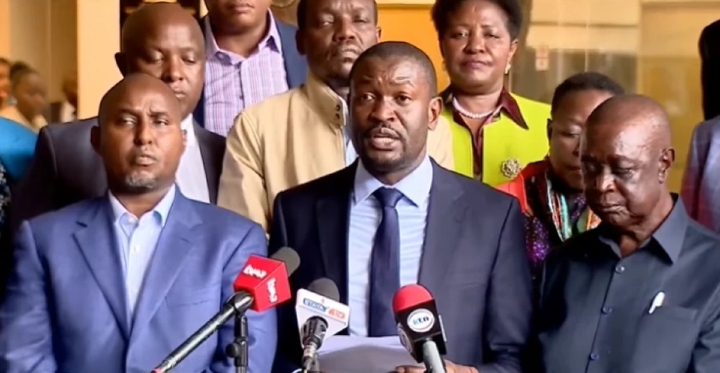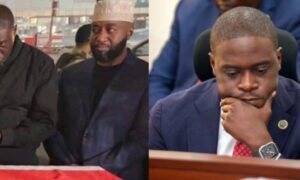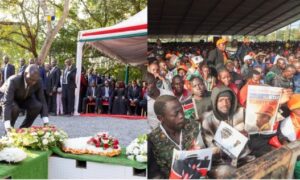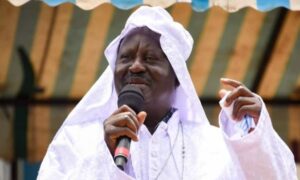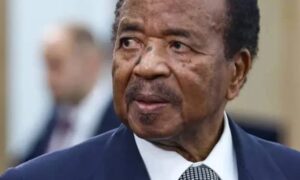Editor’s note: Our editor Getty Soila examines Edwin Sifuna and ODM’s decision to back President Ruto’s government until 2027.
The Orange Democratic Movement’s decision on October 27 to remain part of President William Ruto’s broad-based government until 2027 reads like a work of careful choreography.
It was presented as a commitment to “peace and stability” and to a 10-point agenda agreed upon with the ruling side.
But beneath that public calm, the move exposed brittle fault lines – a party balancing the memory of its late leader, practical levers of power, and a vocal secretary-general Sifuna whose private convictions have often been at odds with the compromise now accepted.
For months Edwin Sifuna, ODM’s secretary-general, has been an unmistakable voice against President Ruto.
He repeatedly declared he would not lend the party his support if it formally backed Ruto for a second term, at times saying he would resign rather than comply.
Those statements were not rhetorical flourishes; they were a public firewall between him and any suggestion of a formal alliance with UDA.
The rhetoric – sharp, personal, and sustained – shaped how many inside and outside ODM read the party’s future.
Collaboration
So why the shift to continued collaboration? Part of the answer is institutional: ODM is not a single voice but a chorus.
With the passing of Raila Odinga, long the party’s lodestar, senior figures have jostled to define his political legacy and the organisation’s next steps.
Newly confirmed party leader Dr Oburu Odinga and regional powerbrokers like Hassan Joho and Mombasa Governor Abdullswamad Nassir leaned toward a steadying posture – keeping influence inside the corridors of power rather than drifting into opposition at a time of national funeral and transition.
This calculus rooted for continuity over confrontation.
Another reason is realpolitik. President Ruto’s administration, by co-opting rivals and rewarding defectors, has reshaped incentives in Kenyan politics.
The pull of patronage – ministerial postings, development projects, and control of local resources – can blunt ideological purity.
For a party with a broad national base and heavy investment in county politics, the costs of walking away from government today can translate into lost ground at the ballot box tomorrow.
This is the quiet arithmetic that has nudged many parties toward accommodation in recent years.
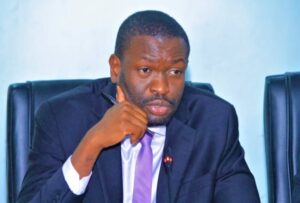
ODM Secretary General Edwin Sifuna. Photo/courtesy
Consequences
Yet the accommodation is not without consequence.
Sifuna’s opposition streak and the very public threats to resign have left a strain of dissent that will not be papered over easily.
His stance galvanised younger and urban cadres who see resistance to Ruto as both moral and tactical.
By staying with the government, ODM risks alienating that cohort – and complicating its claim to lead an opposition resurgence in 2027.
The party must now perform two acts at once: serve in a broad government while preserving its identity as the principal alternative to Ruto. That is an uneasy theatre.
The longer arc of this episode reveals something about Kenya’s political evolution. Parties are increasingly transactional; loyalties bend around institutional advantages and the immediate needs of survival.
But transactions breed suspicion.
For ODM, the bargain offers short-term access and a voice inside policy rooms. In return, the party gives up clarity – an unequivocal, oppositional stance that could have unified its ranks and sharpened its message for 2027.
The final image is small and telling: a solemn Central Management Committee meeting, leaders nodding to a communique invoking peace and a ten-point agenda.
Behind the words, a tug-of-war continues – between discipline and dissent, legacy and leverage, and gratitude and grievance.
READ ALSO: Why Raila Odinga’s ODM is Kenya’s Biggest Threat to Democracy
For Sifuna, the question is personal as well as political: can he remain the party’s watchman and still reconcile with a decision that at times seems to betray the very resistance he has championed?
For ODM, the test is existential: keep power now, or keep purpose for later. Either choice will shape Kenyan politics well beyond 2027.
PAY ATTENTION: Reach us at info@gotta.news.

